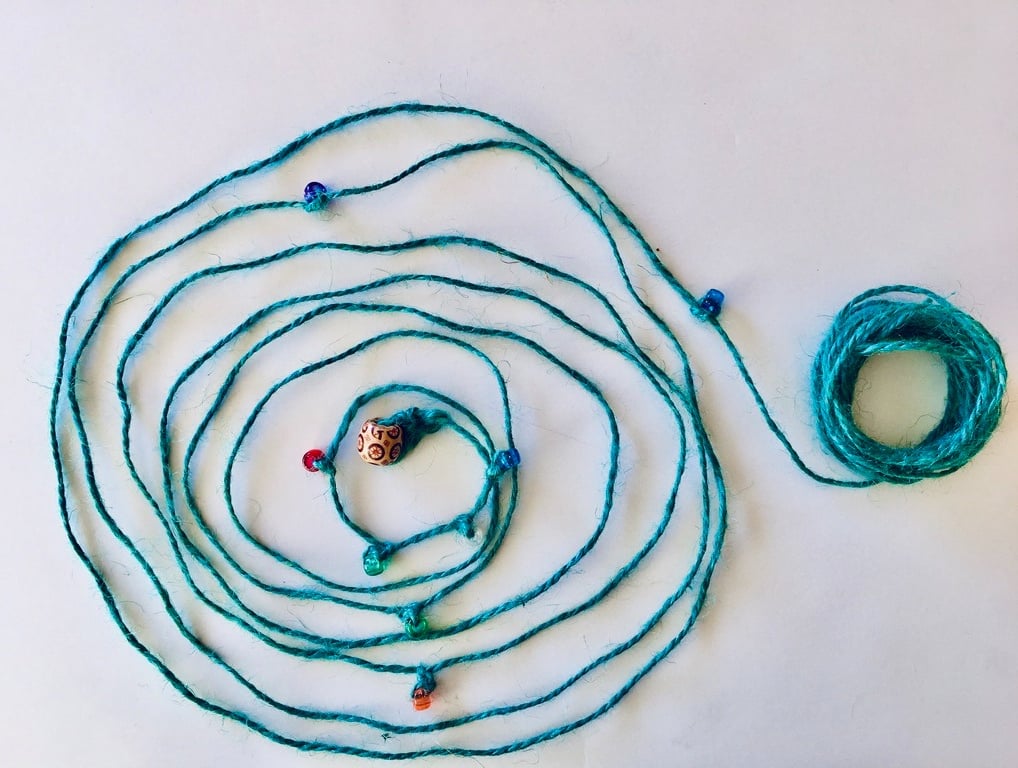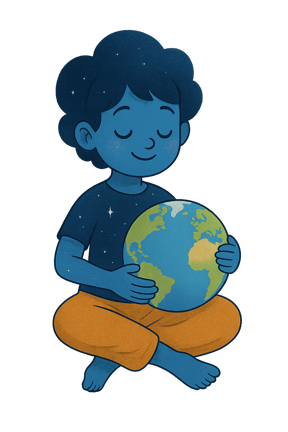Mindful Walkthrough the Solar System
Here I’ll explain how to create this scale model, which will help you learn about the solar system while we take an immersive and inclusive walk through it.
6/25/20253 min read


Materials
A rope at least 3 meters long
Planet cards (optional)
Ruler (optional)
Concepts
Astronomical Unit (AU): It is equivalent to the distance between the Sun and the Earth: 150,000,000 km. This distance is so large that astronomers decided to give it its own unit. Thanks to this, it becomes easier to understand how far planets are from the Sun, or from their own stars in the case of exoplanets.
Scale: When we take an object or a set of related objects and change their size while keeping all proportions the same. For example, the solar system is too big to observe as-is, so we use a scale to shrink it down to a size we can appreciate. However, this is challenging because if we use an appropriate scale to show distances, the planets become too small to see. For this reason, we often choose either a scale of distances or a scale of sizes, but not both at the same time.
Preparing the Activity
This activity can be adapted to students’ age, interests, and abilities—which is exactly what makes it truly inclusive.
First, we need to define our scale. We could decide that one AU equals the length of our index finger, or one foot. For this version, I’ll use a scale where 1 AU = 10 cm.
In other words, we’re going to shrink the Sun, Earth, and Moon so that the distance between the Sun and the Earth is 10 cm. Of course, that means we wouldn’t be able to see the Sun, Earth, or Moon anymore—they would be so small we’d need a microscope.
For example:
The Sun, with a diameter of 1,400,000 km, would be reduced to 0.1 cm.
The Earth, with a diameter of 12,756 km, would be reduced to 0.00085 cm, about the size of a large bacterium or 10 times bigger than the width of a human hair.
Once we’ve defined our scale, we can begin. Placing the Planets on the Rope
Mercury is 0.4 AU → Mark at 4 cm from the Sun. You can tie a knot and attach Mercury’s card there. Make sure not to lose any distance with the knot.
Venus is 0.7 AU → Mark at 7 cm.
Earth is 1 AU → Mark at 10 cm.
Mars is 1.5 AU → Mark at 15 cm.
Jupiter is 5 AU → Mark at 50 cm.
Saturn is 10 AU → Mark at 100 cm.
Uranus is 20 AU → Mark at 200 cm.
Neptune is 30 AU → Mark at 300 cm.
Let’s Begin Our Journey
Now that we have our solar system laid out on a rope, we can begin.
I like to place the rope in a spiral on the floor and turn this into a mindful walk, an immersive journey from planet to planet where we observe the distances between them.
Sometimes, we can pause at each planet and talk about it, learning more about its unique features. This way, we turn the walk into a full lesson about the planets in the solar system.
We notice:
The immense empty space between the planets.
How small our planet is compared to the solar system.
And, in turn, how small we as humans are.
But this doesn’t need to make us feel insignificant. Quite the opposite.
Yes, we are small in size… but we’ve come a long way, we’ve learned so much, and we can be incredibly powerful, even as tiny as we are.
In that contrast between the minute and the immense, we realize that we have the power to protect our home.
Other planets are very far away. None of them can support life as we know it. And even if they could, reaching them is far harder than simply prioritizing care for Earth, respecting it, nurturing it, and living in harmony with it.
If we do these small things, Earth offers us a paradise, a place we can share with all living beings: animals, plants, and ourselves.
Suggestions for the Walk
As we walk and reflect, we can:
Count our steps from the Sun to each planet.
Count the steps between one planet and the next.
Ask ourselves: What do we notice? What do we feel as we walk?
To Wrap Up
We can write down how many steps we took and use that as a personal or group-scaled measurement, “steps” as a unit.
This activity can also be very useful for discussing the solar system with blind or visually impaired participants, as it offers a physical and spatial perspective through movement.
At the end, we can write or share in a group:
Our results
Sensations
Thoughts that came up during our walk through the solar system.
Dra. Breezy Ocaña Flaquer
Astrfísica y practicante de Yoga
Clases
Actividades
+34 612 345 678
© 2025. All rights reserved.
